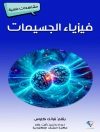This book proposes and develops the equilibrium compound nucleus post-fission theory, a powerful tool for studying the fission process and making numerical calculations of post-fission nuclear data. It begins with a detailed historical background on fission theory and covers fundamental concepts, such as the Bohr-Wheeler formula and time dependent nuclear density functional theory.
The authors explain the kinematics of heavy-ion collisions and develop a heavy-ion spherical optical model. They also present the theoretical methods for calculating the yield, kinetic energy distribution, and angular distribution of fission fragments in the initial state of fission. In addition, readers are provided with the method for calculating the prompt neutron and prompt gamma-ray data as well as the proportion of the isomeric state nucleus and independent yield from the initial yield of the fission fragments. Using the nuclear decay data of the fission products, a method for calculating thecumulative yield and decay heat of the fission fragments is also given. A fission delayed neutron simplification model is proposed and the theoretical method for calculating the total contribution of three fission channels to post-fission nuclear data is provided.
This book concludes with a step-by-step guide on numerical calculations for post-fission nuclear data and a Fortran program for optimizing the best theoretical model parameters. It is ideal for both junior and senior researchers in nuclear physics, as well as graduate students who are interested learning about the subject. Given the current interest in post-fission and the tremendous experimental and theoretical efforts in studying it, this book serves as a timely and comprehensive resource for the nuclear physics community.
Зміст
Chapter 1. Development of Fission Theory.- Chapter 2. Kinematics of Heavy Ion Collisions.- Chapter 3. Heavy Ion Spherical Optical Model.- Chapter 4. Hauser-Feshbach Theory for Heavy Ion Reactions.- Chapter 5. Initial Yield, Kinetic Energy Distribution, and Angular Distribution of Fission Fragments.- Chapter 6. Compound Nucleus Deexcitation Theory.- Chapter 7. Fission Prompt Neutrons, Prompt Rays, and Fission Fragment Independent Yield.- Chapter 8. Fission Fragment Cumulative Yield, Decay Heat, and Final Mass Distribution.- Chapter 9. Fission Delayed Neutron Simplification Model.- Chapter 10. Theoretical Method for Calculating the Total Contribution of (n, f), (n, n’f), (n, 2nf) Three Fission Channels.- Chapter 11. Main Steps of Numerical Calculations for Post-Fission Nuclear Data and Conclusion.
Про автора
Qing-Biao Shen is a researcher at the China Institute of Atomic Energy (CIAE). He was born on September 1, 1938, in Gu’an County, Hebei Province. In July 1963, he graduated from the University of Science and Technology of China with a degree in Physics under the tutelage of Mr. Hong-Yuan ZHU. In the same year, Mr. Shen joined the CIAE and from September 1963 to January 1965, he participated in a group led by Min YU and Zu-Qia HUANG working on hydrogen bomb theory. Since then, Mr. Shen’s career has focused on low and medium energy nuclear reaction theory, nuclear many-body theory, and nuclear data theory, some of which he conducted while he was a visiting scholar at the University of Kentucky from 1985 to 1987.
Mr. Shen is the recipient of twelve National or Ministerial Science and Technology Progress Awards, including five inaugural prizes, and he has published over 300 academic papers as either a lead author or co-author. He is the author of “Nuclear Reaction Theory of Low and Medium Energies” and “Polarization Theory of Nuclear Reactions”. In addition, Mr. Shen developed the Skyrme force microscopic optical potential theory, a theory to this day best fitting experimental data.
Ye Tian is an associate researcher at the China Institute of Atomic Energy (CIAE). She was born on June 16, 1938, in Jinzhou, Liaoning Province. In July 1963, she graduated from the University of Science and Technology of China with a degree in Physics under the tutelage of Ms. Zhen-Xi XIAO. In the same year, Ms. Tian joined the CIAE and engaged in reactor physics firstly. She participated the scientific research and organizational work on China’s first fast reactor zero power device to reach the critical experiment in 1970. When the China Nuclear Data Center was established in October 1975, she was an initial member. Then, Ms. Tian’s career has focused nuclear reaction theory, nuclear many-body theory, and nuclear data theory, some of which she conducted while she was a visiting scholar at the University of Kentucky from 1986 to 1987, 1989. Later, she participated in accelerator-driven nuclear device ADS large scientific research project.
Ms. Tian is the recipient of six Ministerial Science and Technology Progress Awards, and she has published near 100 academic papers as either a lead author or co-author. In addition, Ms. Tian is the co-author of the paper developing the Skyrme force microscopic optical potential theory, a theory to this day best fitting experimental data.












